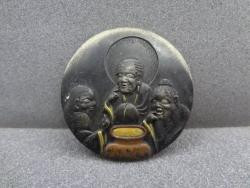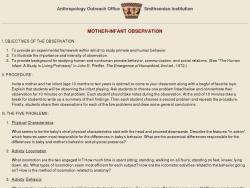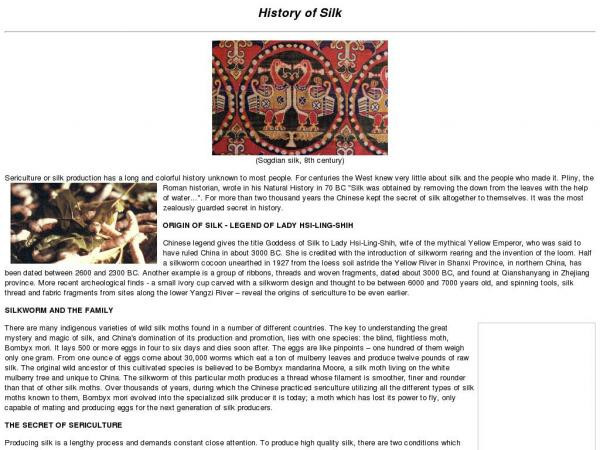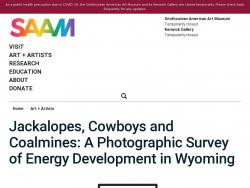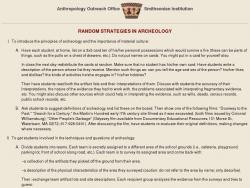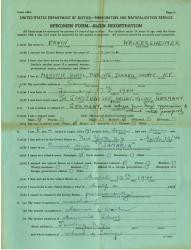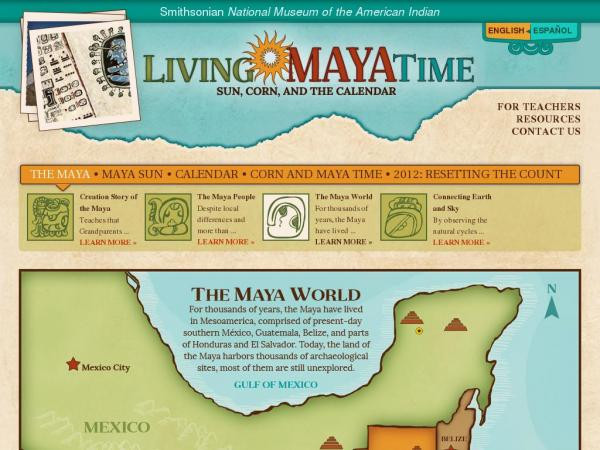Kate Harris
Social Studies teacher
Pittsburgh CAPA
Middle School (13 to 15 years old), High School (16 to 18 years old)
Teacher/Educator
Language Arts And English, Civics, Literature, Cultures, Economics, Social Studies, Geography, Writing, US History, Arts, Other
I'm a history-lover, art fan, and bookworm. I taught high school history (U.S. History and World Religions) for ten years in North Carolina, teach currently in Pittsburgh, PA, and am working to help teachers make the most of this new resource!
Kate Harris's collections
The Three Vinegar Tasters and Daoism
<p>This collection includes a brief overview of Daoism, Confucianism, and Buddhism. It focuses on the story of Laozi and his ideas about the Dao and the balance between yin and yang. It includes two short passages from the Dao de Jing, assessment questions throughout, and a final task where students create their own collection about Daoism.</p><p>Tags: Dao, Confucius, Tao, Buddha, Laozi, China, religion, philosophy</p>
 Kate Harris
Kate Harris
8
Context for Weikers Family Collection: Life in Nazi Germany and Resettling in the United States
<p>This collection was created to align with with the Weikers Family collection and provides general context about life in Germany for a Jewish family in the 1930s and their eventual resettlement to the United States. The artifacts in the collection are not necessarily specific to the Weikers family, but give some idea of how others might have shared similar experiences. </p><p>Tags: Nazi Germany, Holocaust era, primary sources, Pittsburgh</p>
 Kate Harris
Kate Harris
19
Was Reconstruction a Failure?
The period after the Civil War, known as Reconstruction, had lofty goals for reuniting the nation and preserving the new rights given to African-Americans. For a time, these goals were achieved and three important amendments were made to the Constitution. However, by 1876 Reconstruction was considered over and much of the progress that had been made was undone. This collection of detailed prints and cartoons highlight many different aspects of Reconstruction and asks students to consider the overall result of Reconstruction. Students can analyze each one using the embedded questions.
 Kate Harris
Kate Harris
8
How Did Artists View the Civil War? A Collection using a Visible Thinking Strategy
This collection uses a visible thinking strategy called "See-Think-Wonder" from Harvard's Project Zero to help students analyze a Civil-War era sketch to determine context and perspective. After completing the routine, students will learn more about the image and the artist who made it, as well as view art representing a very different point of view.
For more on this strategy, see the "Notes to Other Users."
 Kate Harris
Kate Harris
8
From Silk Worms to the Silk Road
This is a collection of resources that could be used to support a lesson on the discovery of silk and the impact of the silk road(s). Artifacts include images of silkworms and the silk-making process, websites with information about the luxuries traded on the Silk Road, and video summary.
Possible guiding questions include:
-Why did silk become such an important commodity in China?
-How did the development of the silk trade routes impact both Europe and Asia?
-In what ways do artifacts from Europe and Asia reveal the cultural connections created by the Silk Road?
 Kate Harris
Kate Harris
19
The Remains at Pompeii
This is a collection of teaching resources that could be used to support a lesson on Pompeii and Mt. Vesuvius as well as life in ancient Rome. Included are artworks picturing Pompeii, archaeological artifacts, and links to "street views" of the ruins as well as magazine articles on the topic.
Some questions to consider are:
-What can we learn about the life of ancient Romans from the ruins at Pompeii?
-What are the strengths and weaknesses of learning from archaeological ruins?
-Why have the ruins at Pompeii continued to fascinate people over time?
 Kate Harris
Kate Harris
12
Tools of the Labor Movement
The United States labor movement began in full force during the late 19th century and peaked during World War II. Workers learned that by joining together in unions, they could exert more pressure on employers and the government to protect their rights and improve labor conditions. This collection includes a variety of resources related to the United States labor movement, particularly the various tools and strategies used to create change.
Guiding questions to consider are:
-What rights do workers desire?
-How can labor unions influence employers, government, and the public?
-What tools and strategies are most effective for improving working conditions? Consider: boycotts, picketing, appeals to the media, strikes, walk-outs, and slow-downs.
-How does the public perceive labor unions? How does this impact their results?
-Are women and minorities included in the labor movement? Were they always?
 Kate Harris
Kate Harris
25
Archaeology Lessons
This collection includes lesson plans and artifact collections that would be useful for any K-12 study of archaeology. Brief descriptions of the resources are included where necessary, so that teachers can quickly determine what might be applicable to their own classrooms.
 Kate Harris
Kate Harris
14
Sports and the African-American Civil Rights Movement
Popular athletes can reflect the broader societal change that is going on around them; they can also be instigators of that change. This collection traces the African-American civil rights movement through the 20th century and touches on athletes like Jack Johnson, Jackie Robinson, and Muhammad Ali. Students can use the collection independently to learn about this subject and complete the timeline worksheet included at the end.
Students will be asked to generalize about the civil rights movement during different time periods in American history, noting the shifts in focus, strategies, and success. In addition, they will draw parallels between events in sports history and the civil rights movement.
 Kate Harris
Kate Harris
18
Poster and Music Analysis: Joe Hill and the IWW
<p>This collection includes an iconic labor union poster and is intended as a warm-up activity for a lesson on labor unions in the late 19th and early 20th century. Discussion questions and songs by and about Joe Hill are included. </p>
<p>Guiding questions to consider:<br />-What conditions led to the development of labor unions?<br />-How did the philosophy of the IWW, or Wobblies, differ from other labor unions?<br />-Why has Hill remained an iconic figure for the labor movement?</p><p>#SmithsonianMusic<br /></p>
 Kate Harris
Kate Harris
3
Tools for Meditation
Are you interested in meditation? This topical collection includes a variety of tools for meditation, including mandalas, music, prayer beads, labyrinths, and a video of a guided meditation and pranayama (breathing) practice. Web links to additional background information are embedded throughout.
 Kate Harris
Kate Harris
16
Weikers Family Collection Class Warm-Up
<p>This is a single document with hot spots and questions used to model primary source analysis for a sixth grade class. It is drawn from a collection of archival records and photographs documenting the Weikers family's experience in Nazi Germany and their persistent efforts to seek asylum in the United States. You can find the full collection here:</p><p>https://learninglab.si.edu/collections/weikers-family-collection/zGJCDjyWqouEufnb</p><p>Questions to consider are:</p><p>a. Who are the Weikers?</p><p>b. Where did they live?</p><p>c. When did they live? What can they tell us about this time in history?</p><p>d. How were they affected by Nazi Germany?</p><p>e. What did they feel about the Nazis?</p><p>Tags: Nazi Germany, Holocaust era, primary sources, Pittsburgh</p>
 Kate Harris
Kate Harris
2

